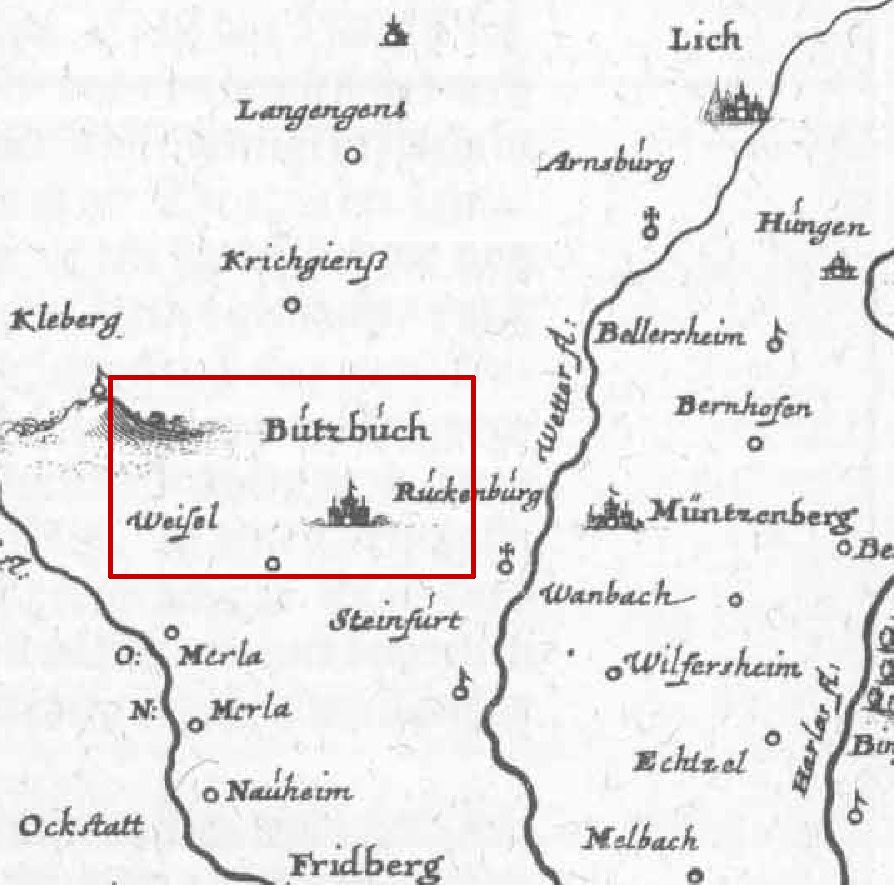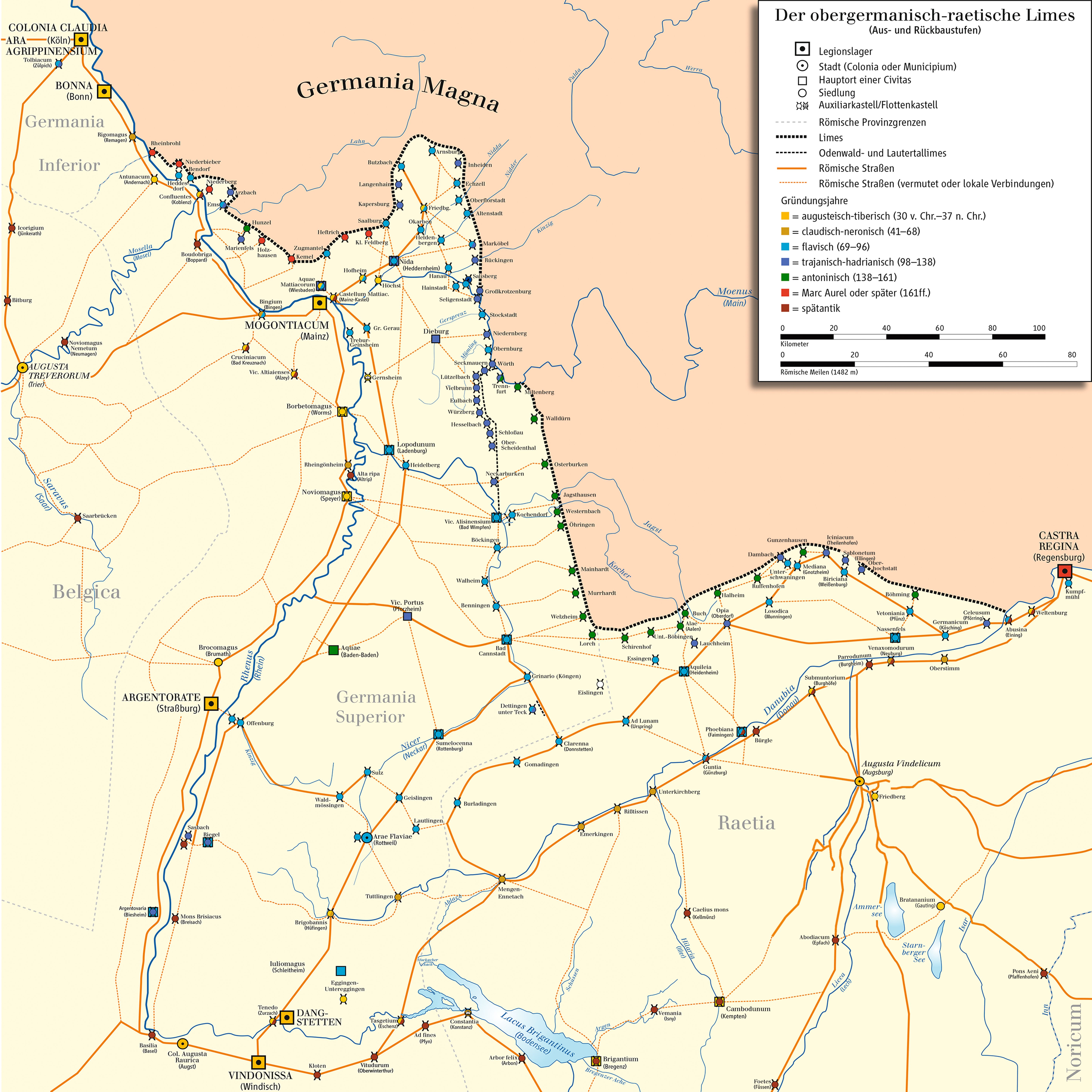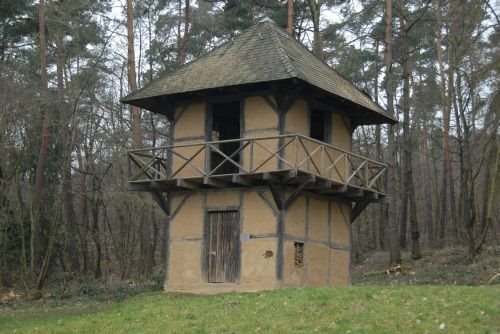The Weisel Surname
- The German Surname Weisel
- Spelling variations Weisel
- Surnames similar to Weisel
- Origin of the Wetterau Surname Weisel
- Weisel Families of the Wetterau (includes Friedberg and first documented)
- History of the Wetterau in Hessen, Germany
- The Rhineland-Palantinate Surname of Geo. Michael Weisel and George Wisel
- The Bavarian Surname Weisel
The German Surname Weisel
Until the 12th century, surnames as we know them were not commonly used in Germany. A person was known to his community by his or her first name. To distinguish between who shared a common first name in a community, a second word would be used to help identify the person. The second word attached to the person's name would often their occupation, appearance, behavior, an event, the name of their father, the name of their farm, or the town where they came from. During the period 1100-1200, population growth and the increasing mobility and migration of the population brought about the adoption of permanent surnames that were passed to successive generations of descendents. The earliest surnames were place names, the most common surname is derived from an occupation. By 1250 permanent surnames had been generally adopted in the region of Hessen. By 1500 the practise of inherited surnames was well established throughout present day Germany. By 1600 - 1700 most German church parishes started recording births/baptisms, marriages, and deaths.
An individual could have assumed Weisel as a surname in one of two ways. Around the 11th century, royalty including barons, counts and knights, or a person or family of great importance in the village, would assume the village or castle name as their surname. Conrad and his family would then be known as Conrad von Weisel, or Conrad of Weisel. The second possiblity could have occured when a villager left Weisel and settled in another village. He was called Johann von Weisel, John from Weisel, by his neighbors to differentiate him from another resident Johann, who had white hair and was called Johann Weiss. The "von" was dropped from the full name except for German nobility, who continued to use it as a sign of rank.
Many villages in Germany derive their name from words that describe a feature or attribute of the landscape. According to "Dictionary of German Names" by Hans Bahlow, "Weisel in the Wetterau area was called Wise-la = swampy terrain". Other possible derivations for the word Weisel come from the Middle High German word of "Wisel" meaning "leader, head chief", or "Weisel" the name of the queen in a bee hive. In the middle ages there was a village called Weisel located in the Wetterau lowland plain of Hessen. The village was located about 20 miles north of the present city Frankfurt am Main and a very short distance to the south of Butzbach.
Today Weisel is known as two adjacent towns called Hoch-Weisel and Nieder-Weisel. The German word "Hoch" means high in English, and "Nieder " means low. This medieval village of Weisel in the Wetterau is the origin of the Hessen Weisel surname, commonly referred to as a "place name. A minor noble family of the Wetterau used the surname von Hochweisel, or von Hohenweisel. The male line of von Hohenweisel went extinct in 1557 with Markwart von Hohenweisel.
By 1600 Weisel families were resident in a number of cities and towns in the Wetterau including Hanau, Friedberg, Dorheim, Steinfurth, Münzenberg, Muschenheim, Bettenhausen, Laubach, Münster, Fauerbach vor der Höhe, and Maibach.
Surname Spelling Variations for Weisel
The spelling of German surnames was not standardized until the 19th century. In Germany during the late middle ages, most people, including the nobility, could not read and write. In this era there was no correct spelling of a name. People didn't possess a passport or official document for identification. So the spelling of a surname changed from writer to writer. In early documents names were spelled phonetically or transcribed at the writer's preference. Many spelling variations for a given surname can be found in Germany and the United States during the 1600s through the 1800s. Frequently the same parish minister would use a different spelling for the family from one entry to the next. And it is not unusual to find a surname with more than one spelling within the same record!
The alternative spelling of "Weisel" with a double S, "Weissel", was common in the 1600s to the early 1800s in the Hessen church parish books. By the mid 1800s the name was fairly consistently spelled Weisel in Hessen and by those individuals who immigrated to the USA during the 1700s and 1800s. I suspect this "standard" spelling matched the commonly used spelling for the towns Nieder-Weisel and Hoch-Weisel. Today the official phone book spelling is Nieder-Weisel.
A few Weisel families in the USA changed the spelling of their surname. Known spelling variations of Weisel are as follows:
- "Weisell" is an alternative spelling for direct descendants of Georg Michael Weisel who immigrated to PA in 1732. It was started in Ohio by the sons of Michael G. Weissel/Weisel and Catharine Garis McIntyre, around 1835. The spelling of Weisell is found today by their descendants in NY, OH, IN, IL, CA, TX, NM, as well as in other states.
- Vonweisel is an alternative spelling for a family line in the USA descended from Johann Georg Weisel born 1805 in Muschenheim, Hessen. Johann Georg and his family emigrated in 1854 from Gambach, Hessen to central Wisconsin.
- Wysel is an alternative spelling for descendents of George Michael Weisel who immigrated to PA in 1732. This name came into use in Cambria County, PA after the Civil War. Moses Wisel was a gg grandson of Geo. Michael. (Geo. Michael->George->George->Joseph->Moses) Moses had 3 children, a son William, and two daughters. The children of Moses went by the surname Wysel. William Wysel had 9 children between 1876 - 1896, all bearing the surname Wysel.
- Wiysel is an alternative spelling for descendents of George Michael Weisel who immigrated to PA in 1732. The name first came into use about 1850 in Missouri with Alexander Wiysel, and in the 1860s by Alexander's younger brother Daniel Wiysel. Alexander and Daniel Wiysel were gg grandsons of Geo. Michael. (Geo. Michael->George->George-> Joseph->Alexander & Daniel). Alexander had two adult sons and Daniel had at least one son, possibly more as he was married twice.
Alternate spellings similar to Weisel, or occurred as a misspelling of Weisel, in USA census data, immigration lists, and other documents: Weisil, Weissel, Wiessel, Wiesela, Weizel, Wizel, Wizele, Wiseley, Wisel, Wissel, Weisil, Weisyl, Wysel, Wysell, Wyssel. Most of these variant spellings exist only in the United States, and a few only exist on paper.
Surnames similar to Weisel
There are surnames that look similiar to, or sound like Weisel, such as Wiesel and Weitzel. Unless they are the result of a misspelling when the immigrant family arrived in the United States, they are unlikely to be connected or related. Wiesel derives from a different root word and represents a different family tree and origin.
Richard Wiesel of 68789 St.Leon-Rot, Germany, writes this about the origin of his surname:
"The roots of the familyname Wiesel was approx. 1525 the city of Wesel. This city was for the evangelisch-lutheran faith-refugees from Flandern (is Belgium since 1848) and Lower-Germany ( is Netherland since the 17th century) the place of refuge against the terrible prosecutions through the catholic church. As you know from the history there was a lot of faith-wars from 1520 - 1648. A terrible past for our ancestors."
"A little bit later (1530/40) in this time period the faith refugees must flee again from Wesel to other regions in Germany: Lower-Germany, Hessen, Thuringia and Saxonia. I found my ur-ancestor in Thuringia 1541 in the near of Weimar. Mis-understandings through the clergymen -sometimes Wesel, sometimes Wiesel, or Wisel,or Wißel / Wiessel / Wießel / Wießell... all was possible and to find into the old churchbooks in Germany parishes."
Origins of the Wetterau Surname Weisel

|
The surname Weisel is a Hessen place name.
The name originates from the village called Weisel (in the middle ages), or Nieder-Weisel (today)
located about 2 km south of Butzbach. |
Weisel Families of the Wetterau
Friedberg Patrician Family Weisel by Dr.Alexander Dietz. 1919
Early Weisels in the Wetterau by Norbert Weisel, Jan. 2001
A Written Essay by Johannes Soukup, Ingolstadt, Bavaria
Descendents of Theophilius Weisel Die Nachfahren des Johann Theophilius Weisel, 3/11/2001
"According to an article by attorney Dr. Alexander Dietz, a descendant of Frankfurt a. M., to which city some members went, ... various Weisel descendants scattered from Friedberg and settled and became mayors, treasurers, and councilmen at other towns in Hanau, Munzenberg, Solms, and Kurpfalz (a part of the Palatinato) territories or became military officers. This article is entitled Die Friedberger Patrizierfamilie Weisel Patrizierfamilie Weisel and appeared in the Hessische Chronik's Monatschrift fur Familien- und Ortsgeschichte in Hessen und Hessen-Nassau, VIII, January and February, 1919. Publisher: Verlag von Professor D. Dr. Wilhelm Diehl, in Friedberg, pages 23 - 28."
History of the Wetterau in Hessen, Germany
The Wetterau has a long history and is one of the oldest cultural landscapes in Germany. It was always a very fertile region and was populous from as early as the Neolithic Age. The Wetterau Map of the Wetterau about 1640 was of high strategic relevance for the Roman Empire during its advance into the free Germania. After the end of the Germanic and Gallic wars (58 to 51 BC) a number of Roman forts and roads were built in the Wetterau. A series of fortifications, part of the Limes, surrounded the fertile Wetterau region. 1
The Roman Era (83 A.D. - 260 A. D.)
The Wetterau was conquered by Ceaser Domotian (81-96 A.D). To mark and fortify the boundaries, a construction called the "Limes" was built. The Limes consisted of a road, an earth wall, a ditch, and a wall constructed of wood for increased protection from the Germanic tribes. Spaced to be in sight of each other, towers were erected, first out of wood and later out of stones. 2
In an area with one of the most fertile soils in Germany, a loess or a very rich loam, and next to the boundary of the Limes, the Romans established two military citadels. One for 50 men to protect the Limes trade route, and close by a second fort for a cohort and its cavalry of 500 men. Traders, craftsmen, businessmen, and the soldiers families soon settled about the forts so that there arose a great camp village which was the largest in the Wetterau. Romans in numbers ranging from 3000 to 5000 dwelt here. Veteran soldiers were given huge farms. 3
The History of Butzbach
The Chatten, the Germanic predecessors of the Hessians, receive the credit for driving the Romans out of the Wetterau about 260 A. D. Of the Roman population, no one was allowed to remain. After the Romans left the Wetterau, many German tribes alternated in their passage through the Wetterau until finally, centuries later, the Franks established the Frankish empire.
The present day village of Butzbach sprang up outside the ruins of the Roman fort and the remains of the Roman camp village described in the previous paragraph. The first documentary mention of Butzbach was in 773 in the Lorscher Codex.





